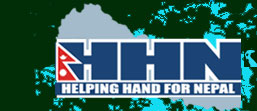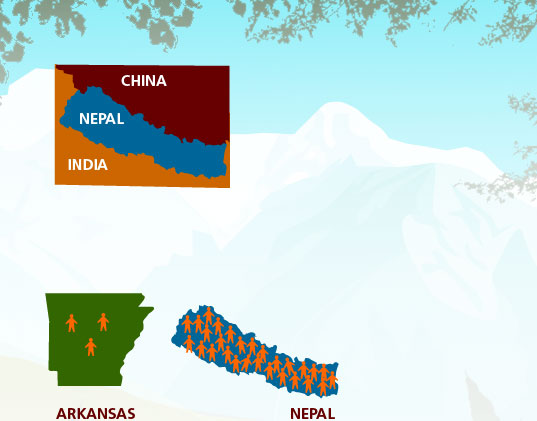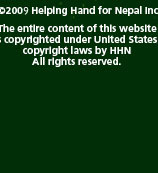• At nearly 57,000 square miles, Nepal is about the size of Arkansas
Arkansas: 2.7 million people
Nepal: 28 million people
• Seven geographical zones ranging from tropical to subarctic
• As one of the world's poorest countries, it is estimated:
15% have access to electricity
55 out of 75 districts are nutritionally deficient
50% of children under age five are underweight
42% live below the Nepali poverty line
literacy rate is 40% (Nepali fifth grade education--up
from 1% in the 1950s)
62% are male and 27% are female
over 700 schools have closed due to Maoist violence
200,000 Nepalis are internally displaced due to the Maoist conflict
Nepal shelters 100,000 Bhutanese refugees
Nepal continues to process 2,500 Tibetan refugees fleeing their
homeland annually
• Disaster prone with frequent floods and earthquakes
• Women's and children's health issues include:
female trafficking
prolapsed uterus
blindness due to trachoma
poverty
63% of pregnant and lactating women are anemic
infant mortality rate is 65.32 out of 1,000 live births
(compared to the U.S. rate of 6.43 live births out of 1,000)
9% of births are attended by trained personnel
5% of births are in a health facility
16% of the rural population have access to sanitation facilities
51% of urban population have access
Nepal's population is 90% rural
diarrhea and death from dehydration are serious problems for children
under age five










